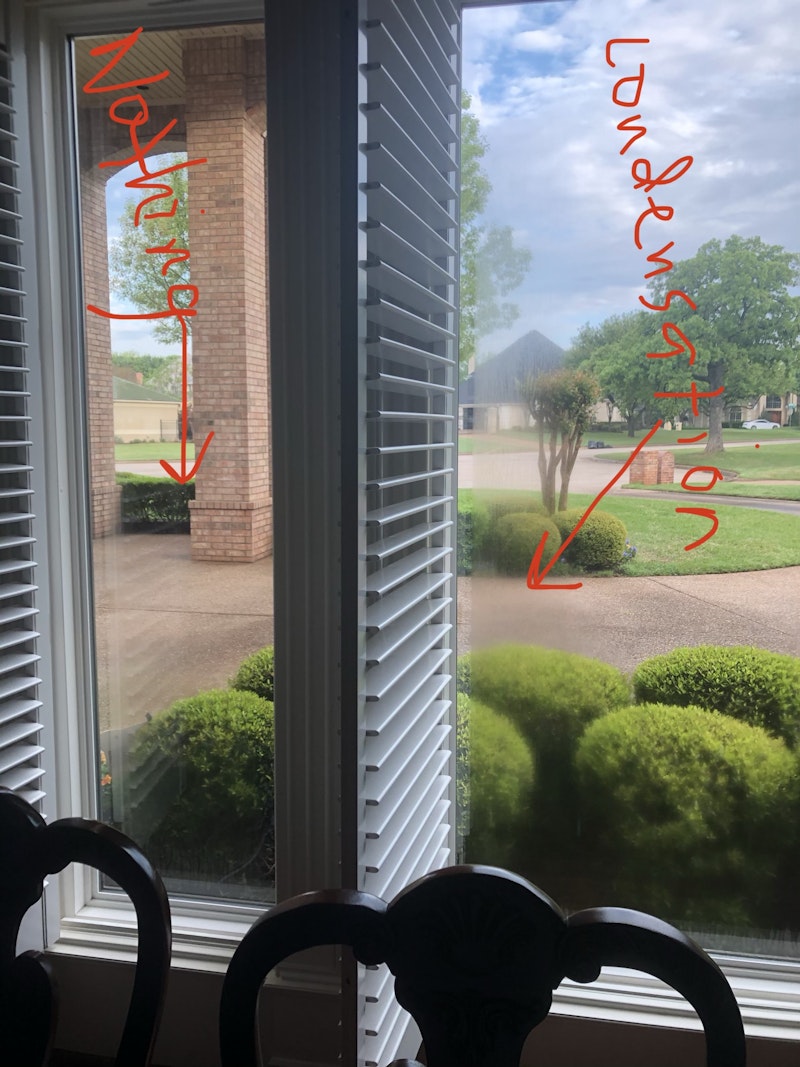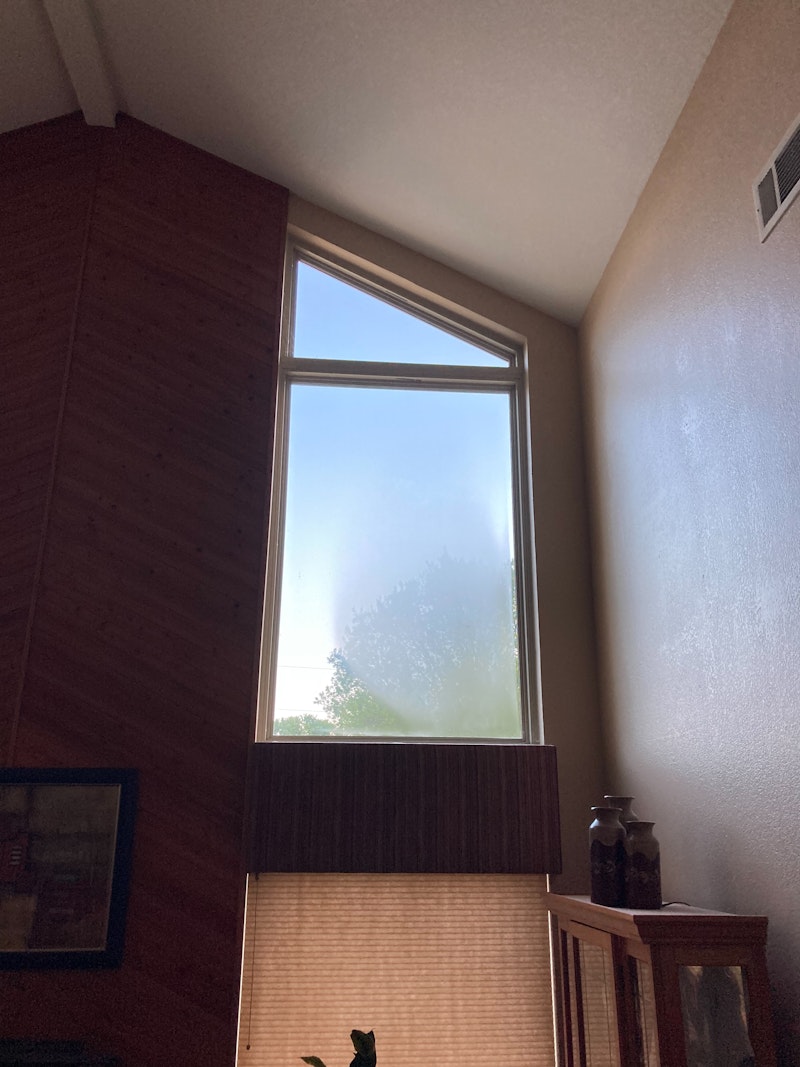
How To Prevent Condensation on Aluminum Window Frames
Most of us probably don’t give much thought to condensation on and around our windows. Condensation on windows seems like a relatively minor issue but can lead to other problems.
We’ll examine why homeowners should be concerned, why aluminum window frames are particularly susceptible to effects from condensation, and what solutions are available.
Use the links below to skip ahead:
What causes condensation on windows?
Many homeowners find condensation on window sills in winter. But what causes the condensation to form to begin with?
Condensation occurs when warm, moist indoor air collides with a cooler surface. Glass can be one of the coldest materials in your home and attracts excess water vapor. Air temperature, combined with humidity level, defines a temperature at which condensation will form. This is called the Dew Point Temperature. Running your heating system is one of the reasons you might notice the formation of condensation.
Condensation on windows in winter is prominent because the cold outside temperatures cool window glass in contrast to the warmer air inside the house. The combination of cold air and warmer, moist air will make your windows "sweat".
More specifically, for North Texas residents, we typically experience high humidity indoors in the springtime with cooler temperatures in the morning and evening hours.
As a result, it can be a peak time for condensation to form on our windows. Sometimes we experience this same effect later in the fall and into the winter as it begins to cool down again.
What problems can condensation cause?
While seemingly harmless, condensation can lead to a variety of issues that may result in more significant problems that should concern you.
Prolonged and recurrent window sweating can cause mold to form in and around your windows and in your walls, particularly if you have an air leak. Mold can lead to a variety of health issues including triggering allergies and cause respiratory problems like asthma and bronchitis, not to mention an unpleasant odor. Black mold↗ can be particularly toxic and lead to chronic illness over time.
Condensation can lead to other problems affecting your home. Continuous exposure to moisture for windows with wooden interiors can rot. The wooden framework and drywall in the walls around your windows are also susceptible to this type of damage.
Metal parts like hinges and screws can corrode and damage to window seals can occur allowing the elements in. Additionally, leaky windows can contribute to poor air quality indoors and the health issues mentioned above.
Why Is an Aluminum Window Frame a Particular Concern?
When it comes to aluminum window frames, window sweating is a natural occurrence because aluminum is a metal that tends to transfer both heat and cold easily. When the outdoor temperature drops, any indoor heat present in a conditioned space escapes through your aluminum windows and the frame of your window becomes colder.
As the inside warm air comes in contact with the cold window frames, the temperature drop results in the release of moisture. Condensation then forms externally as droplets on your window and may also form between the glass. Aluminum frames are a particular concern because they have higher thermal transfer compared to other materials. Wood windows and vinyl windows have less thermal transfer and though they aren’t immune, they are less likely to experience condensation buildup.
5 ways to prevent condensation on windows
As we learned above, dew point temperature is the result of warm, moist air coming in contact with colder surfaces. Here are our five best tips for preventing window condensation.
1. Using a dehumidifier
To prevent window sweating, you need to reduce the humidity percentage so that the dew point temperature is cooler than the surface temperature. There are several ways to accomplish this such as using a dehumidifier or keeping the heat consistent throughout your home.
2. Keeping the temperature balanced
While not always possible, you can help balance the temperature by setting thermostats in different parts of the house to the same temperature.
3. Being mindful of your kitchen and bathroom areas
Bathrooms and kitchens are the major sources of humidity inside your house. Therefore, letting out the excess humidity through vents and/or exhaust fans can help prevent condensation on window frames by creating a dryer atmosphere.
Moreover, the implementation of kitchen and stove fans when you're cooking is even more effective if they’re left running for an extra 15-20 minutes after you’re finished. Similar practices should be used for bathroom vents or fans, for maximum effectiveness.
4. Applying weather stripping to windows
Weatherstripping↗ is a protective material that can be applied to windows to prevent cold air from seeping in through joints and frames and prevent cooling walls and windows, reducing condensation.
While weather stripping may solve issues if those are the only places cold air is getting in, the seals may have failed in older windows.
5. Considering storm windows
If you have older window systems installed in your home that are in good repair but don’t provide adequate protection from condensation, storm windows can make a significant difference in the winter months. Storm windows reduce condensation on your interior windows and boost your home’s energy efficiency.
While condensation can develop on the storm windows themselves, they do reduce frost buildup on the interior windows. The air space between the two windows allows the interior window to stay warmer.
While storm windows are not an ideal solution, particularly with the development of more energy-efficient windows, they might be a good choice for historic homes.
Condensation between the glass panes
Condensation between window panes is a tell-tale sign of seal failure. The most effective and long-lasting solution is to replace windows with failing seals.
If budget constraints don’t allow for full replacement, the glass in the sash can be replaced. Keep in mind that glass replacement is sometimes as expensive as replacing the entire window unit and may not last as long.
If you decide to replace your aluminum windows, consider choosing windows made from vinyl or fiberglass instead. Window frames made from vinyl or fiberglass transfer less energy than aluminum frames so they are less likely to experience condensation on the frame. You might also consider replacing older single-pane windows with double, triple, or quadruple-glazed window systems.
Final thoughts
If you notice excessive condensation on or around your aluminum window frames during the cooler months in North Texas, contact Brennan so we can evaluate your situation.
While Brennan doesn’t offer window repair, we will give you an honest assessment as to if it is time to replace your windows. If we believe you have other options, we’ll be happy to recommend the right professional to help you take the next steps. If you do need replacement windows, we’ll make sure you get the right solution for your home.
Oops!
We don't currently serve your area but do want to help you plan your project. Try our Build & Price tool to get an idea of window & door costs within DFW. Your area may be higher or lower but at least you'll have some idea of the price.
Thanks for stopping by.











